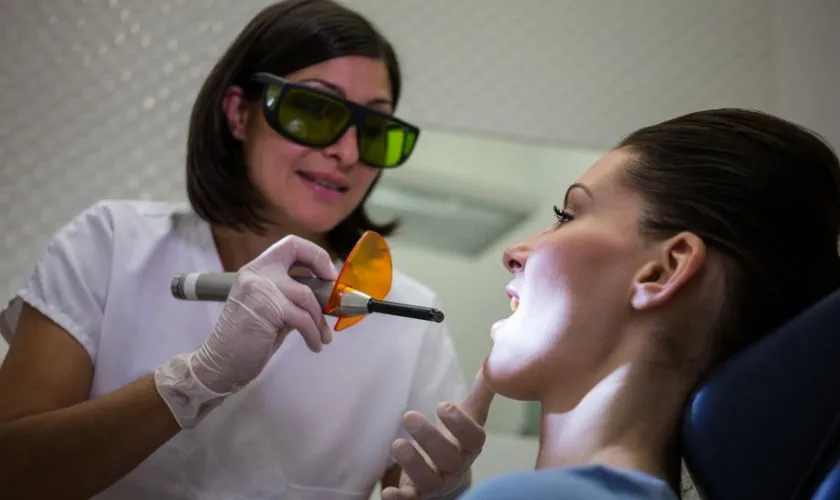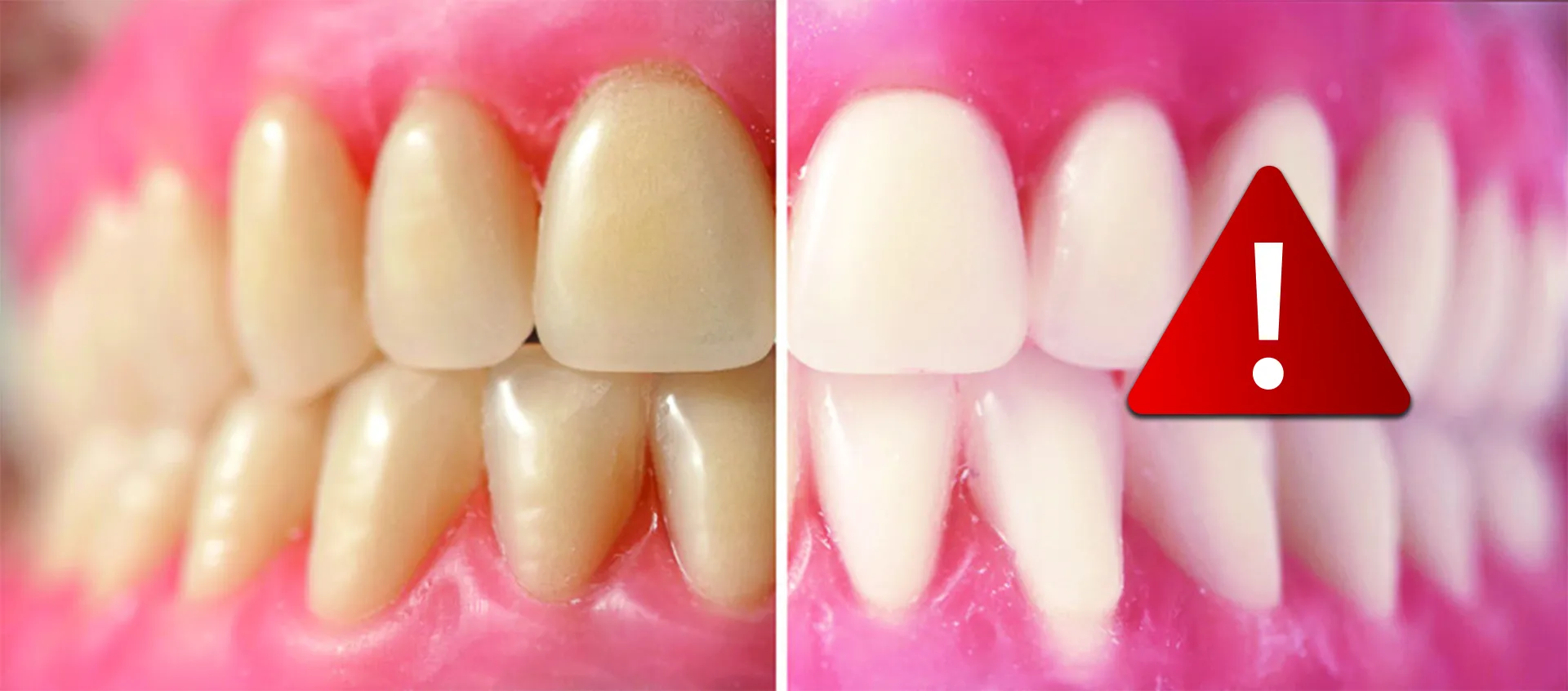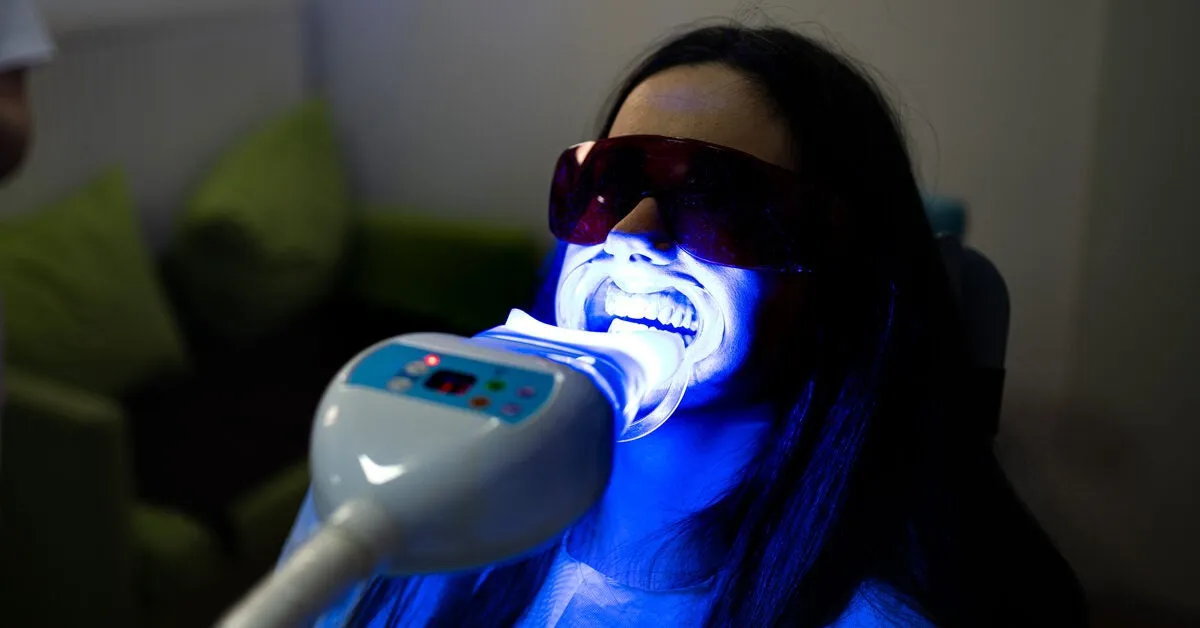Laser Teeth Whitening Dangers Fact 1 Sensitivity and Discomfort
Laser teeth whitening, a popular cosmetic procedure, promises a brighter smile. However, it’s crucial to understand the potential downsides before undergoing the treatment. One of the most common side effects is increased tooth sensitivity and general discomfort. This sensitivity often occurs because the whitening agents, typically hydrogen peroxide, penetrate the enamel and reach the dentin, the layer beneath the enamel that contains nerve endings. This interaction can lead to temporary but noticeable sensitivity to hot, cold, sweet, or acidic foods and beverages. Understanding this risk is the first step in making an informed decision about laser teeth whitening. Always consult your dentist to discuss your teeth condition, this will allow a better whitening result and a better procedure.
Causes of Sensitivity and Discomfort
The sensitivity experienced after laser teeth whitening is primarily due to the bleaching agents used, which dehydrate the teeth and open the tubules in the dentin, making the nerves more exposed. The laser itself doesn’t directly cause the sensitivity; instead, it accelerates the whitening process, increasing the concentration of the bleaching agents’ interaction with the tooth structure. The intensity of the sensitivity can vary based on several factors, including the concentration of the whitening agent, the duration of the treatment, and the natural sensitivity of the individual’s teeth. Individuals with pre-existing tooth sensitivity or thin enamel are at a higher risk of experiencing significant discomfort. It is important to understand the reasons behind this discomfort to manage it effectively.
How to Minimize Sensitivity

Several strategies can help minimize tooth sensitivity after laser teeth whitening. Your dentist may recommend using toothpaste designed for sensitive teeth, which contains ingredients like potassium nitrate to block nerve endings. Avoiding extremely hot or cold foods and drinks for a few days after the procedure can also help. Additionally, over-the-counter pain relievers can provide temporary relief from any discomfort. Before the procedure, your dentist might apply a desensitizing agent or fluoride treatment to help protect the teeth. Adhering to post-whitening instructions from your dentist and maintaining good oral hygiene will contribute significantly to reducing and managing sensitivity. Make sure to ask your dentist about the procedure details and if it’s the best for your teeth.
Laser Teeth Whitening Dangers Fact 2 Gum Irritation and Damage
Besides tooth sensitivity, gum irritation and damage are potential risks associated with laser teeth whitening. During the procedure, the whitening agents can come into contact with the gums, causing inflammation, redness, and even chemical burns. This is because the gums are more sensitive and vulnerable than the teeth’s enamel. Proper precautions and techniques by the dental professional are crucial to protect the gums from exposure to the whitening chemicals. This potential for gum damage underscores the importance of choosing a qualified and experienced dentist for your teeth whitening treatment. Improper application or inadequate protection can lead to significant discomfort and potential complications.
Understanding Gum Damage Risks
The risks of gum damage from laser teeth whitening stem from the bleaching agents’ potent nature. These chemicals can cause chemical burns if they come into contact with the soft tissues of the gums. The severity of the damage can vary based on the concentration of the whitening agent, the duration of exposure, and the individual’s sensitivity. Symptoms of gum damage include redness, swelling, pain, and blistering. In severe cases, gum damage can lead to infections or require additional treatments. The dentist must isolate the gums properly during the procedure to prevent such issues. Being aware of these risks is crucial in making an informed decision about undergoing laser teeth whitening and ensuring the safety of your oral health. The dentist should check your teeth’s condition before starting the procedure.
Preventive Measures for Gum Protection

To protect the gums during laser teeth whitening, dentists employ several preventive measures. These include applying a protective barrier, such as a rubber dam or a liquid dam, to shield the gums from the whitening agent. Ensuring the gums are completely dry before applying the whitening solution helps prevent it from spreading. Using a lower concentration of the whitening agent or shortening the treatment duration can reduce the risk of gum irritation. Regularly monitoring the gums during the procedure and promptly addressing any signs of irritation are also crucial. Patients should inform their dentist of any known sensitivities or allergies to ensure the safest possible treatment experience. Following these preventive measures can significantly minimize the risk of gum damage.
Laser Teeth Whitening Dangers Fact 3 Tooth Enamel Erosion
Another significant concern associated with laser teeth whitening is the potential for tooth enamel erosion. Although tooth enamel is the hardest substance in the human body, the bleaching agents used in the procedure, particularly those with high concentrations of hydrogen peroxide, can weaken the enamel over time. Enamel erosion can make teeth more susceptible to decay, sensitivity, and discoloration. The process involves the gradual wearing away of the enamel, which can eventually expose the underlying dentin, leading to increased tooth sensitivity and an altered appearance. Understanding the science behind this erosion is essential for making informed decisions about the procedure and taking preventive measures to protect the enamel.
The Science Behind Enamel Erosion
The science behind enamel erosion during laser teeth whitening revolves around the chemical reaction between the bleaching agents and the tooth enamel. The hydrogen peroxide, the main active ingredient in most whitening products, breaks down into free radicals, which then interact with the organic components of the enamel. Over time, this interaction can lead to the demineralization of the enamel, making it thinner and weaker. The acidic nature of some whitening agents can also contribute to erosion. Additionally, the laser used in the process might generate heat, which can exacerbate the effects of the bleaching agents. Therefore, it is crucial to understand the mechanism by which these treatments can affect enamel integrity to protect your teeth and minimize potential risks.
Strategies to Protect Tooth Enamel

Several strategies can help protect tooth enamel during and after laser teeth whitening. Using fluoride-containing toothpaste and mouthwash strengthens the enamel and helps remineralize it. Avoiding highly acidic foods and drinks, such as citrus fruits, sodas, and sports drinks, is advisable, especially after the procedure. Discussing the procedure details with your dentist to potentially use lower concentrations of the whitening agent or shorter treatment durations can also minimize enamel erosion. Additionally, the use of remineralizing products, such as tooth mousse or specific gels prescribed by your dentist, can help restore minerals to the enamel. Regular dental check-ups and professional cleanings will help to monitor the health of the enamel and address any signs of erosion early on. Make sure to follow your dentist’s instructions and maintain a diligent oral hygiene routine.
Laser Teeth Whitening Dangers Fact 4 Risk of Allergic Reactions
Although not as common, allergic reactions are a potential risk associated with laser teeth whitening. The whitening products may contain ingredients that trigger allergic responses in susceptible individuals. These reactions can range from mild to severe and require immediate medical attention. The ingredients that cause allergic reactions can vary, so it is essential to be aware of what might be present in the whitening products and inform your dentist of any known allergies before the procedure. Understanding these risks is essential for patient safety and ensuring that any allergic reactions are promptly addressed and treated. Always consult with your dentist about your allergies before the procedure.
Common Allergen Ingredients in Whitening Products
Several ingredients commonly found in teeth whitening products can trigger allergic reactions. Hydrogen peroxide, the primary bleaching agent, can irritate some individuals. Other ingredients include flavoring agents, preservatives, and stabilizers. People with known allergies to these ingredients should take extra precautions. It is crucial to review the product’s ingredient list with your dentist before undergoing laser teeth whitening. The dentist can help identify potential allergens and recommend alternative products or procedures. Being well-informed about the ingredients is a proactive step in ensuring a safe and comfortable teeth whitening experience, minimizing the risk of adverse reactions. Consider asking your dentist for a patch test.
Identifying and Managing Allergic Responses

Identifying and managing allergic responses to laser teeth whitening is crucial for patient safety. Allergic reactions can manifest as skin rashes, itching, swelling, or, in severe cases, difficulty breathing. If you experience any of these symptoms during or after the procedure, seek immediate medical attention. Your dentist can administer antihistamines or other medications to manage mild reactions. For more severe reactions, additional treatments, such as epinephrine injections, may be necessary. It is vital to communicate any symptoms to your dentist and follow their instructions closely. Being prepared for potential allergic reactions and knowing how to respond promptly can significantly improve patient outcomes and minimize discomfort.
Laser Teeth Whitening Dangers Fact 5 Inconsistent Results and Expectations
The final fact to consider regarding laser teeth whitening is the possibility of inconsistent results and unmet expectations. While laser teeth whitening can effectively brighten teeth, the outcomes are not always predictable. Factors such as the natural shade of your teeth, the type of stains, and individual enamel characteristics play a significant role in determining the whitening outcome. Some individuals may achieve dramatic results, while others may experience only a slight improvement. It is crucial to have realistic expectations about the potential outcome before undergoing the procedure and discuss these with your dentist. This will help avoid disappointment and ensure you are satisfied with the final results.
Factors Influencing Whitening Outcomes
Several factors can influence the outcomes of laser teeth whitening. The initial shade of your teeth is a key determinant; those with darker shades may require more treatments to achieve the desired results. The type of stains present also plays a role, as some stains are more resistant to bleaching than others. For instance, stains from coffee, tea, and tobacco are often more challenging to remove than stains caused by age or genetics. The health and condition of your teeth, including the presence of fillings, crowns, or other dental work, can also impact the outcomes. It is also important to note that teeth whitening does not work on fillings or crowns. Therefore, understanding these factors is vital in setting realistic expectations and ensuring a satisfactory outcome from your laser teeth whitening treatment.
Managing Realistic Expectations

Managing realistic expectations is crucial for a positive experience with laser teeth whitening. Before the procedure, consult with your dentist to discuss your desired outcome and the potential limitations. Your dentist can assess your teeth’s condition and explain what results are achievable. Be aware that the results may vary from person to person, and multiple treatments may be necessary to achieve the desired shade. It’s also essential to understand that teeth whitening is not permanent, and maintenance treatments may be required to maintain the results. By setting realistic expectations and discussing them with your dentist, you can increase your satisfaction with the procedure and avoid disappointment. Having a healthy smile is an important factor to consider when considering laser teeth whitening.
